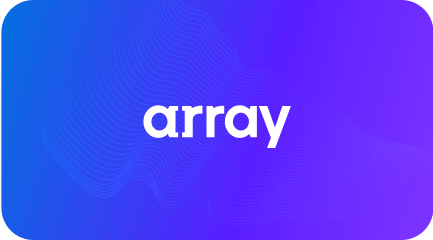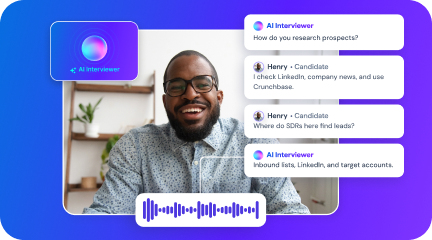Successful recruiting balances thoroughness with speed and efficiency to meet ambitious growth goals as quickly as possible. An efficient hiring process can help you do more than just fill roles – it can also help you move fast enough to win top talent.
Recent research from Greenhouse found that more than half of candidates expect a response to an initial job application within a week. Two in five candidates say that timely responses and follow-ups from recruiters are among the most important factors in their interview experience.
Looking to kick your hiring into a higher gear? We’re here to help with tips to accelerate your processes from three leading recruiters who have built great teams while also fast-tracking their companies’ hiring:
Elizabeth Shober Smith, VP of Recruiting at Udemy
Elizabeth brings 10+ years of recruiting and HR experience to lead the global recruiting efforts at Udemy, an online learning platform that offers upskilling courses for professionals.
Shaina Semiatin, Head of Talent Acquisition at Grindr
Shaina has over 10 years of experience scaling private equity and venture-backed startups. She’s the Head of Talent Acquisition at Grindr, the world’s largest social networking app for gay, bi, trans, and queer people.
Carly Jones, Head of Talent and People at Sourcegraph
Carly is the Head of Talent and People at Sourcegraph, a code search and repair tool for software developers. She’s played a key role in tripling the size of the company’s internal team in just over a year.
Read on for Elizabeth, Shaina, and Carly’s best tips for building a more efficient hiring process while achieving recruiting success:
Six tips to help you build a more efficient hiring process
1. Know what candidates really want – and deliver it
In 2020, much of what we’d come to expect about the corporate world changed. The pandemic reshaped people’s priorities for workplace environments, job flexibility, and how their careers fit into their lives. Despite this evolution, many companies continue to source, vet, and hire candidates using inefficient methods that no longer win top talent.
“The [post-COVID] environment changed a lot of rules for us [at Udemy],” says Elizabeth Shober Smith, VP of Recruiting at Udemy. “We used to have offices that people came into, but we had to start recruiting differently because we understand that people don’t want that. … It’s really about understanding the environment candidates want and being able to articulate that clearly. People are shopping offers, so knowing how to speak to their heart and give them that kind of experience is a way to separate [your company].”
The takeaway: connect with candidates on their needs and non-negotiables early in the interview process. This gives you time to work behind the scenes to deliver what candidates really want.
2. Share resources to improve your time-to-hire
We’ve all heard the adages: Many hands make light work. And, two heads are better than one. These are true in hiring, too. A collaborative recruiting approach encourages anyone with relevant expertise to pitch in during the hiring process.
Sharing knowledge, resources, and even anecdotal examples from previous hires can empower your team to more flexibly and efficiently compete with fast-moving competitors. Elizabeth agrees, highlighting ‘open-source recruiting’ as one way to share resources. “I’m really into open-source; it’s how we all get better,” says Elizabeth.
Here’s how you might apply open-source recruiting in practice. Imagine you’re considering a remote candidate, and you need to research competitive compensation based on their local cost of living. This kind of bottleneck can impact how quickly you can make or negotiate an offer. To speed up your process, check with other recruiters at your company to see if anyone has hired for a similar role or in a similar place and can share their research.
3. Remember your long-term hiring goals
With millions of openings in the current job market, today’s recruiters are under pressure to improve their time-to-hire while also filling a growing number of roles. Even so, Shaina Semiatin, Head of Talent Acquisition at Grindr, cautions companies to keep long-term hiring goals in mind rather than simply filling seats as quickly as possible. She says:
“At the end of the day, you still want to be advancing the values of the company. You want to be thinking about representation and about hiring the best possible people for the role. While I do think that there is value in reducing time-to-hire, the real question is what’s better for the business in the short run versus the long run. Would you rather have seven hires that advance the business goals around representation and inclusion or eight hires that hit the number but aren’t really hitting on those other components or goals?”
Finding a balance between short-term hiring needs and the longer-term, mission-driven strategy of the company is key to making the right hiring choices.
4. Don’t focus too much on salary
Candidates in today’s market tend to focus too much on base salary – and most recruiters let them. This can slow negotiations and time-to-hire and may even cost you your ideal candidate. Shaina recommends reminding candidates that a salary is just one part of a full compensation package. With this in mind, you can highlight other competitive advantages of your benefits package instead of losing valuable time on cash-related conversations.
Shaina says: “Take inventory of everything in your hiring process: your involvement, your engagement with your stakeholders, your EVP (your value prop or your employee value proposition). What are you offering employees? Your mission, vision, values, total rewards package, what you offer in growth, and what your hiring managers do for candidates all have value. The entire lifecycle of an employee should play into hiring conversations.”
5. Implement consistent, team-wide interview training
A foundational interview training program for recruiters and hiring managers can help ensure that every candidate has a consistent, equitable experience applying for your company. The benefits extend beyond just the interview process: a positive hiring experience can also lead to higher overall employee satisfaction and retention.
Improving your hiring process doesn’t have to stop after the first interview training. Your team can also develop annual re-training or continued education to keep colleagues aligned. Carly Jones, Head of Talent and People at Sourcegraph, says:
“One of the things that I cared deeply about was establishing the right process from the beginning that caters to the market. My mantra for my team is, ‘We will be the best recruiters our candidates ever talk to regardless of hiring outcome.’ … So, we spent a lot of time enabling our hiring managers, teaching them why it’s important to limit the amount of time we’re interviewing, and why there’s not an ROI in having 10, 20 steps in a process. That way, when we implemented tools to allow us to be really efficient and effective, they got it.”
6. Prioritize consistency with external partners, too
It’s important to align your recruiters and hiring managers so everyone’s on the same page.
Carly says: “I want my recruiter to be an extension of the hiring manager. I want them to know exactly what that hiring manager is looking for. If we’re missing the mark three times in a row, it’s time for a recalibration to speed up the process and to build respect, mutual agreement, and accountability between the recruiter and the hiring manager.”
Be sure every recruiter on your team understands the importance of these relationships with hiring managers and give them tools to help grow and maintain their connection. This could include hosting meetings that allow recruiters and hiring managers to interact personally to get to know each other and align on goals. It could also include adding digital tools to your team’s resources, such as an interview intelligence platform that allows your team to record, share, and analyze virtual interviews.
Eager to learn more great tips from these experts? Watch our recent webinar featuring Shaina, Carly, and Elizabeth.
Increase hiring efficiency with BrightHire
At BrightHire, we help companies bring in great talent more efficiently without compromise. We record and transcribe interviews and create a set of highlights you can revisit and share – to streamline the process, improve the candidate experience, and give teams better information to make the best possible hiring decisions.
Request a free demo to see BrightHire in action. Or, join our brand-new Slack community for talent professionals to stay up-to-date on the latest talent acquisition and recruiting trends and best practices.









